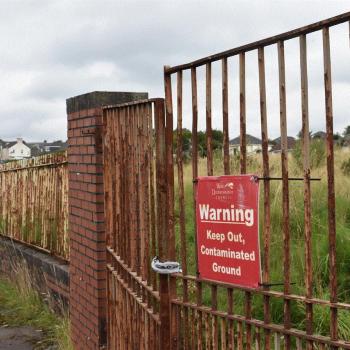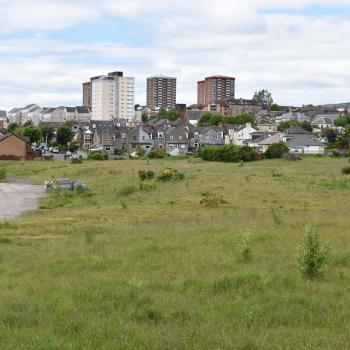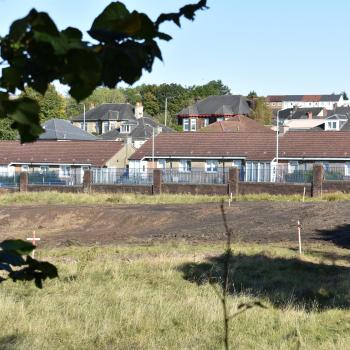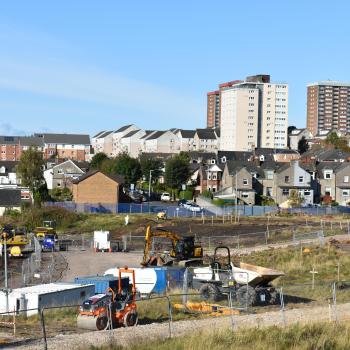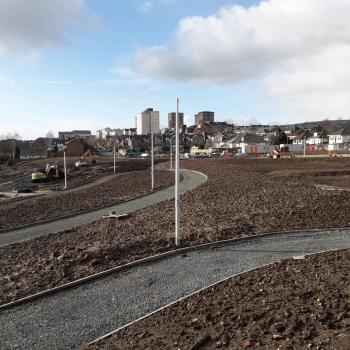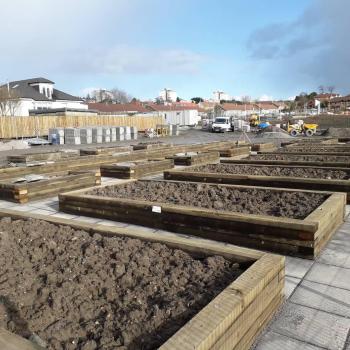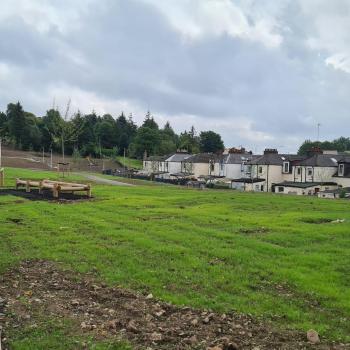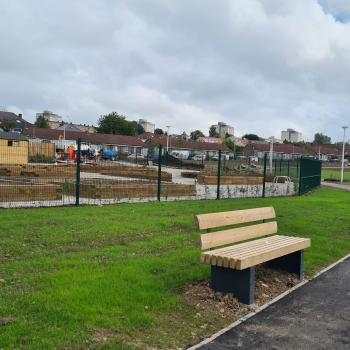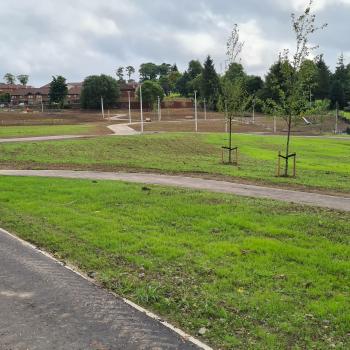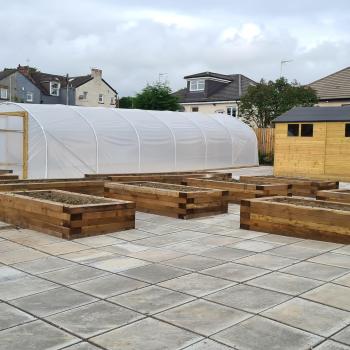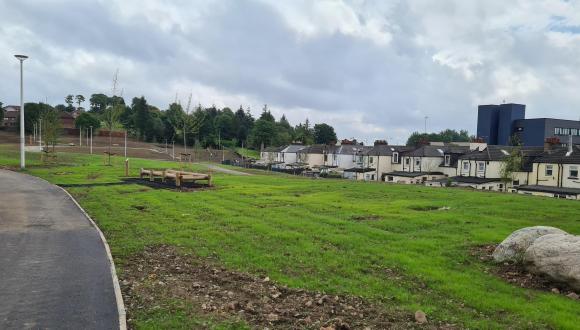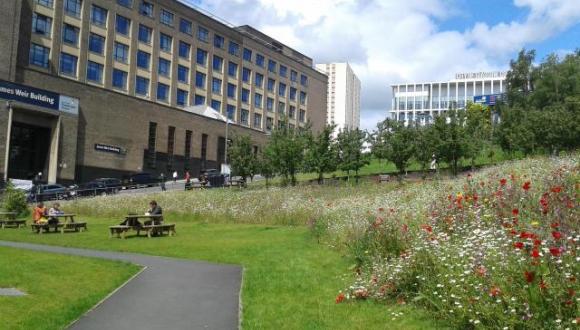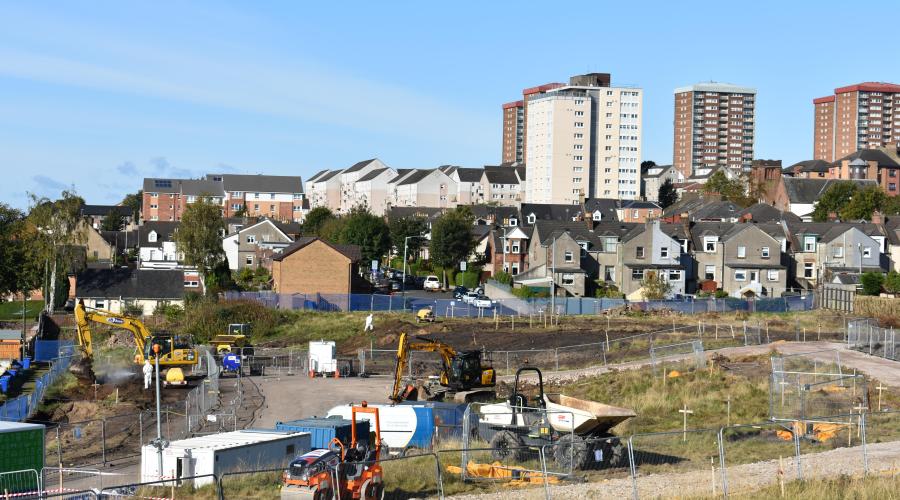
Melfort Park
An attractive and exciting community greenspace with biodiversity areas, raised bed allotments, outdoor exercise equipment, natural play and outdoor learning areas as well as interpretation about the heritage of Clydebank
Melfort Park
Grantee: West Dunbartonshire Council
What the project set out to achieve
West Dunbartonshire Council aimed to develop the former St Eunan’s Primary School site, located within a residential neighbourhood of Clydebank and which was inaccessible and severely contaminated, and thus unsuitable for housing development, which was the original plan. The site was to be transformed into an attractive and exciting new Community Green Space with biodiversity areas, raised bed allotments, recreational areas for children, outdoor exercise equipment, and outdoor education areas as well as interpretation about the heritage of Clydebank. In addition, new pedestrian routes would be provided through the site.
A look at the transformation of the site of the former St Eunan's Primary School in Clydebank
Where the project idea came from
When surveys revealed the site to contain asbestos-containing materials, thus making it unsuitable for housing development, another option needed to be found. Community consultation revealed that a greenspace was the most favoured option, and capping of the site meant that this was feasible.
How the community helped develop the project
Melfort Park was created with the community for the community. To ensure that the Council identified the best long-term use for the site, whilst addressing the contamination issues, a feasibility study was commissioned and consultation events with the local community were held. Residents had an opportunity to discuss the future of the site, provide their suggestions as well as voice concerns. A biodiversity park emerged as the most favoured option, followed by community raised bed allotments and pathways. Local residents were also invited to get involved in project development, contribute their ideas and provide feedback on design proposals.
How the project fits into the bigger picture
The project delivered an additional 2.07 hectares of green infrastructure and extended open space and recreation facilities for people of all ages in an urban area where there is a clear shortfall. The site has become an important asset for the local community in an area where 80% of the population live within 500 metres of vacant and derelict land and where there is a need for better quality greenspaces, and contributes to the Open Space Strategy (2011) that identified a lack of natural and semi-natural greenspace in the local area.
How the project improved the local area
The site was previously inaccessible to public and contaminated. It was on the Vacant and Derelict Land Register. The project has remediated the site and made it safe, and created open publicly accessible greenspace. The site was removed from the Vacant and Derelict Land Register, and the creation of this new park brought the site back into a productive use, which benefits the local community.
It has delivered accessible and open greenspace, a place where the local community can walk, exercise, socialise, and enjoy contact with nature. In addition, 434m of new accessible routes through the site help connect communities to the north with the town centre amenities through creating of a convenient active travel route. A large community growing area provides an opportunity for many residents and schools to get involved in food growing as well as to socialise with other local people of all ages and backgrounds, thus fostering community cohesion.
Biodiversity areas for wildlife are enhanced, such as wildlife meadows, providing a range of different plants, shrubs and trees to provide opportunities for shelter and food for various species throughout the year.
The project has improved opportunities for contact with nature and for physical activity for local children and adults, and will contribute to the improved health and well-being of local residents. The site enjoys about 500 visitors per day, with over 300 school children engaging with the site per year through outdoor learning.
Please read our project blogs below to gain additional insight into the impacts of the project.
The story of Melfort Park, a Green Infrastructure Fund project.











